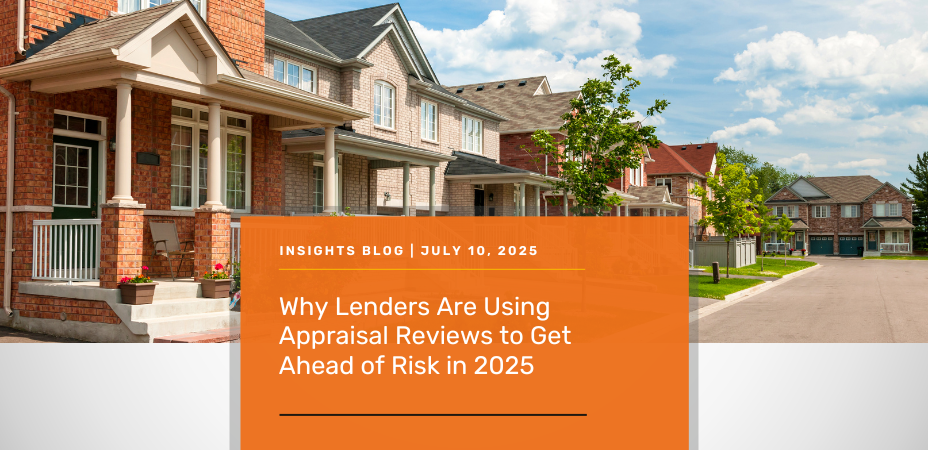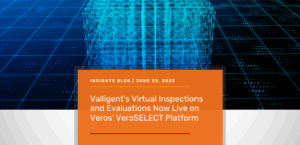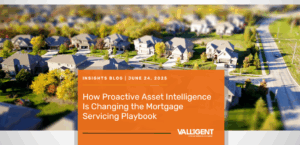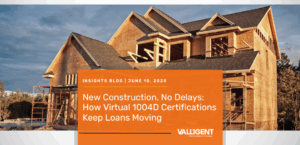In the real estate financing, the accuracy and robustness of collateral valuation isn’t just about meeting regulatory checkpoints; it’s a critical driver of financial stability and effective risk mitigation for lenders. While the initial appraisal provides that foundational value, it’s the strategic appraisal review process that truly strengthens an institution’s position, translating raw data into actionable risk intelligence. This is a move beyond simply ticking boxes to a proactive, strategic approach to appraisal oversight.
Why is this particularly critical in 2025 for U.S. lenders? We’re navigating a unique confluence of persistent market volatility, shifting regulatory priorities from federal agencies, and rapid technological advancements specific to the U.S. financial landscape. This environment presents both significant challenges and opportunities for U.S. financial institutions. So, it is a good time to take a look at appraisal reviews.
Why Proactive Appraisal Review is Non-Negotiable
A well-defined appraisal review strategy isn’t merely an operational function; it’s an integral component of a resilient lending business, especially as we look across 2025 in the U.S. market.
- Elevated Risk Management in a Fluid U.S. Market: While interest rates may see some moderation in 2025, the U.S. market remains highly sensitive to domestic economic indicators and Federal Reserve policy. These fluctuations directly impact U.S. property values and borrower capacity. Strategic reviews act as a vital early warning system, identifying potential overvaluations or market inconsistencies before they lead to loan defaults in a shifting rate landscape. For instance, commercial property delinquency rates have notably increased in Q1 2025, with specific sectors like lodging and industrial showing particular vulnerability in U.S. CMBS loans, where levels reached 5.2% [1]. This underscores the heightened need for vigilance in commercial real estate portfolios across the U.S.
- Strengthened Underwriting Decisions Amidst Shifting U.S. Market Dynamics: The median home-sale price in the U.S. reached $403,700 in March 2025, setting a new record for that month and marking the 21st consecutive month of year-over-year increases [2]. This ongoing trend and affordability challenges across various U.S. housing markets demand even greater underwriting precision. A rigorous appraisal review ensures the original report aligns with internal lending guidelines and evolving U.S. industry standards, including those from Fannie Mae and Freddie Mac. This deeper, validated scrutiny empowers more informed and confident underwriting, significantly reducing post-closing surprises in a market characterized by high prices and elevated, though stabilizing mortgage rates.
- Seamless Regulatory Compliance in an Intensifying U.S. Landscape: Regulatory scrutiny isn’t easing in 2025; it’s sharpening its focus from U.S. federal agencies on areas like Environmental, Social, and Governance (ESG) factors and Automated Valuation Models (AVMs). While the International Valuation Standards (IVS) 2025, effective February 2025 [3], sets a global standard, U.S. regulators are increasingly echoing these principles in their expectations for risk management and fair valuation. Moreover, the new Interagency Automated Valuation Model (AVM) Quality Control Standards Rule is set to take effect on October 1, 2025 [4], specifically impacting how U.S. financial institutions manage and validate automated property valuations for mortgage and home equity products. Appraisal reviews serve as an internal audit mechanism, demonstrating due diligence and systematic compliance with mandates from U.S. federal bodies (e.g., OCC, Federal Reserve, FDIC, NCUA), especially for complex or higher-value loans and those now subject to new ESG considerations and AVM rules. In the millions, the financial implications of non-compliance are substantial for U.S. institutions, significantly exceeding the cost of proactive compliance.
- Consistent Quality Control in the Age of U.S. AI and Automation: While AI and digital tools are rapidly transforming U.S. real estate valuation, robust human oversight through strategic review processes remains crucial. AI has the potential to generate $110 billion to $180 billion in value within the U.S. real estate market [5] through improved accuracy and efficiency. However, this advancement also necessitates rigorous quality control. A strategic review process establishes a consistent, high-performance benchmark for appraisal quality across all assignments, ensuring that even technology-assisted valuations are thoroughly vetted and meet your institution’s stringent standards. This helps identify recurring issues, address appraiser performance, and ensure that every valuation accepted aligns with your institution’s high standards for accuracy and reliability.
- Effective Reconsideration of Value (ROV) Handling in a Borrower-Centric U.S. Market: Borrower disputes over valuations are an increasingly common occurrence in the U.S. market. A recent analysis highlighted that 33.6% of appraisals carried a “high risk” of inadequate or missing adjustments, potentially leading to over $27 billion annually in repurchase risks for U.S. lenders [6]. A clear, documented, and efficient review process can transform a potential challenge into an opportunity. Whether it’s a concise desk review or a more comprehensive field review, a strong framework enables efficient and equitable re-evaluation of the valuation based on new information. This preserves client trust while unequivocally upholding valuation integrity in a competitive U.S. lending environment where client experience is paramount.
Aligning Review Type to Risk Profile for Optimal Efficiency
Understanding the nuances of different review types is crucial for optimizing efficiency and effectiveness within your appraisal management framework, especially as U.S. institutions seek to streamline operations without compromising risk management:
- Desk Reviews: These are your efficient solution for routine quality checks on lower-risk, more standardized U.S. loans. They offer a cost-effective way to confirm compliance and reasonableness, particularly with increased digital adoption.
- Field Reviews: Indispensable for higher-risk U.S. loans, complex commercial properties, or when significant concerns arise. A physical inspection by a qualified U.S. professional provides the deepest level of verification and assurance, critical for complex assets or those in volatile U.S. sub-markets.
- Form Reviews (e.g., Fannie Mae 2000/Freddie Mac 1032): Your standardized tools for ensuring residential appraisals meet specific U.S. Government-Sponsored Enterprise (GSE) guidelines, which continue to evolve with updates like the Market Area Analysis and appraisal reporting requirements effective for applications on or after February 4, 2025, issued by Fannie Mae and Freddie Mac [7,8].
- Technical & Compliance Reviews: Critical for internal governance, these reviews ensure that your appraisal processes and documentation meet all U.S. regulatory and internal policy requirements, especially as new regulations (like the AVM rules taking effect October 1, 2025) come into effect.
Investing in Confidence, Not Just Compliance
In 2025, viewing appraisal reviews as simply an operational cost is a strategic misstep for U.S. financial institutions. Instead, recognize them as a vital investment in the stability, profitability, and future resilience of your entire loan portfolio. By prioritizing a strategic, risk-aligned appraisal review process, your institution can lend with greater confidence, manage risk with unparalleled precision, and secure long-term financial health in an increasingly complex and digitally driven U.S. market. The evolving U.S. real estate landscape, growing domestic regulatory demands, and rapid technological advancements collectively underscore that proactive and rigorous appraisal reviews are no longer just good practice – they are a mandate for sustainable success in 2025.
How is your institution adapting its appraisal review strategy to meet the demands of this dynamic U.S. landscape? Want more reliable appraisals? Start with ValREVIEW for better appraisal reviews – contact Valligent today!
Citations:
[1] MBA commercial real estate finance performance Q1 2025 U.S. https://www.mba.org/news-and-research/newsroom/news/2025/05/13/delinquency-rates-for-commercial-properties-increased-in-first-quarter-2025
[2] National Association of Realtors data, March 2025. https://www.nar.realtor/research-and-statistics/housing-statistics/existing-home-sales
[3] International Valuation Standards Council (IVSC)
https://www.appraisers.org/docs/default-source/5—standards/ivs-effective-31-january-2025-redline-edition-33-51.pdf?sfvrsn=d768966b_1
[4] Federal Register
https://www.federalregister.gov/documents/2024/08/07/2024-16197/quality-control-standards-for-automated-valuation-models
[5] McKinsey and Company
https://www.mckinsey.com/industries/real-estate/our-insights/generative-ai-can-change-real-estate-but-the-industry-must-change-to-reap-the-benefits
[6] Restb.ai, The Impact of Condition and Quality on Appraisal Accuracy, research paper. https://2372710.fs1.hubspotusercontent-na1.net/hubfs/2372710/Restb.ai%20White%20Paper%20The%20Impact%20of%20Condition%20%26%20Quality%20on%20Appraisal%20Accuracy%20-%20PDF%20Version.pdf?hsCtaAttrib=189885142115
[7] Fannie Mae Market Area Analysis Appraisal Requirements 2025.
https://singlefamily.fanniemae.com/originating-underwriting/appraisers/appraiser-update
[8] Freddie Mac appraisal reporting updates 2025.
https://guide.freddiemac.com/app/guide/bulletin/2025-1




